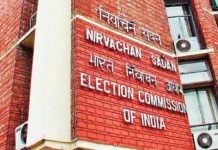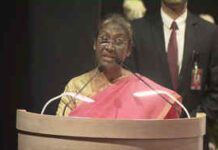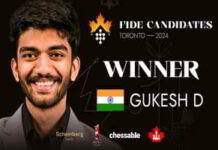Memory Based Questions Asked In IBPS PO 7th and 8th Oct.2017 (All Shifts) Exam
Directions (1-5): What should come in place of question mark (?) in the series given below?
- 41, 164, 2624, ?, 6045696
(a) 104244
(b) 94644
(c) 94464
(d) 102444
(e) None of these
- 14, 43.5, 264, ?, 76188
(a) 3168
(b) 3176
(c) 1587
(d) 1590
(e) 3174
- 274, 301, 426, 769, 1498, ?
(a) 3016
(b) 4264
(c) 7692
(d) 2829
(e) None of these
- 6, 26, 134, 666, 3334, 16666, ?
(a) 83334
(b) 84256
(c) 54333
(d) 13425
(e) None of these
- 949, 189.8, ?, 22.776, 11.388, 6.8328
(a) 48.24
(b) 53.86
(c) 74.26
(d) 56.94
(e) None of these
Directions (6-9): What should come in place of question mark(?) in the questions given below?(you are not expected to get exact values).
- 3739.98 + 164.89 × 29.95 = ?
(a) 10540
(b) 8800
(c) 8690
(d) 6900
(e) 6300
- 6524.98 ÷ 544.88 × 1.02 = ?
(a) 21
(b) 33
(c) 14
(d) 12
(e) 28
- 51% of 5086 – 3/7 of 899 = ?
(a) 2215
(b) 2315
(c) 2025
(d) 2157
(e) 2351
- 21 + 4.9 × 7.9 + 9.88= ?
(a) 65
(b) 71
(c) 66
(d) 75
(e) None of these
Directions (10-14): In the following table, number of students studying in five different branches of a university is given for the year 2017. Also given the percentage of students participating in two different games (Hockey and Football). Study the table carefully and answer the questions that follow:
- What will be the difference between students playing Hockey and football together from the Electrical branch and the no. of students playing the same games from Electronics branch?
(a) 8
(b) 6
(c) 12
(d) 11
(e) None of these
- If 40% students in the Mechanical branch are girls then find the ratio of girls playing Hockey from Mechanical branch to the students playing Football from the Civil branch?
(a) 24: 13
(b) 25: 17
(c) 13: 24
(d) 23: 28
(e) Cannot be determined
- Total no. of students playing Hockey and Football from Computer Science branch are approximate what percent of total no. of students playing the same games from the Mechanical branch?
(a) 125%
(b) 120%
(c) 117%
(d) 113%
(e) 135%
- Find the approximate average no. of students playing Football from all branches.
(a) 81
(b) 93
(c) 95
(d) 85
(e) 90
- If 40%, 30% and 50% students are girls in respected branches Electrical, Civil and Computer Science, then find the average no. of girls from these branches who participate in Hockey if the percentage of girls participating in Hockey are 10%,15% and 12% from respected branches (approximately).
(a) 21
(b) 23
(c) 24
(d) 17
(e) 26
Some More Questions On Number Series with Solution
1). 3072, 192, 24, 6, ?, 3
Logic: ÷16, ÷8, ÷4, ÷2
Answer: 3
2). 3, 4, 9, 28, 113, ?
Logic: ×1+1, ×2+1, ×3+1, ×4+1
Answer: 566
3). 104, 102, 96, 84, ? 34
Logic: Difference of Difference- 4, 6, 8, 10
Answer: 64
4). 6, 280, 410, 468, 490, ?
Logic: Difference of Difference- 144, 72, 36, 18
Answer: 494
5). 11, 5, 4, 4.5, 7, ?
Logic: ×0.5-0.5, ×1-1, ×1.5-1.5, ×2-2
Answer: 15
6). 9, 5, 6, 10.5, 23, ?
Logic: ×0.5+0.5, ×1+1. ×1.5+1.5, ×2+2
Answer: 60
7). 18, 20, 26, 38, 58, 88
Logic: Difference of Difference- 4, 6, 8, 10
Answer: 58
8). 1, 20, 58, 134, 286, ?
Logic: ×2+18, ×2+18, ×2+18
Answer: 590
9). 8, 7, 13, 38, 151, ?
Logic: ×1-1, ×2-1, ×3-1, ×4-1
Answer: 754
10). 32, ?, 1024, 2048, 2048
Logic: ×8, ×4, ×2, ×1
Answer: 256
Reasoning Ability
Puzzle:
There are eight people S T U V W X Y Z live on the different floor of a building. Living in different states. Bihar, Maharashtra, Gujarat, UP, Rajasthan, Kerala, Odisha, Goa
- Z live on an odd no floor above floor no 3. One from Gujarat lives immediately below Z.
- Three persons live between Z and the one who is from Rajasthan.
- As many people live above Z as below X.
- V live immediately below Y.
- Y live on an odd no floor above X.
- One person lives between who is from Maharashtra and Y.
- U live on an odd no floor. One from Kerala lives immediately above U.
- As many persons live between U & Z as between S and Goa.
- More than two persons live above Y and one from Bihar.
- T is neither from Bihar nor from Odisha.
Directions (1-5): Study the information given below and answer the given questions.
Eight friends P, Q, R, S, T, U, V and W are sitting in a circle, but not necessarily in the same order. Four of them are facing outside and four of them are facing the centre.
- T faces outside. Both the immediate neighbours of T face the centre. W sits second to the right of T. Q sits third to the left of T.
- S faces the centre. Both the immediate neighbours of S face outside.
- V sits second to the left of P. Q sits third to the right of W.
- U is an immediate neighbour of S. R is an immediate neighbour of V.
- S is not an immediate neighbour of Q.
- No two inside persons sits together.
- Who amongst the following sits on the immediate right of W?
(a) P
(b) S
(c) R
(d)V
(e) None of these
- Who amongst the following sits third to the right of P?
(a) S
(b) T
(c) U
(d) P
(e) None of these
- Four of the following five are alike in a certain way, based on the information given above and so form a group. Which is the one that does not belong to that group?
(a) WP
(b) RQ
(c) UQ
(d) TS
(e) RV
- If all the people are made to sit in an alphabetical order, in the clockwise direction, starting from P, the position of whom amongst the following remains the same (excluding P)?
(a) T
(b) U
(c) R
(d) V
(e) None of these
- Who sits opposite to P?
(a) Q
(b) U
(c) R
(d) V
(e) None of these
Directions (6-10): In each of the questions below are given four statements followed by four conclusions numbered I, II, III and IV. You have to take the given statements to be true even if they seem to be at variance from commonly known facts. Read all conclusions and then decide which of the given conclusions logically follows from the given statements disregarding commonly known facts.
6. Statements:
Some bags are truth.
All truth are shirts.
Some shirts are boys.
All boys are shops.
Conclusions:
- Some shops are bags.
- Some boys are bags.
III. Some shops are shirts.
- Some shirts are bags.
(a) Only I and II follow
(b) Only I and III follow
(c) Only III and IV follow
(d) Only II and IV follow
(e) None of these
- Statements:
All pens are chairs.
All flowers are chairs.
All chairs are trucks.
All trees are trucks.
Conclusions:
- Some trucks are pens.
- Some trucks are chairs.
III. Some trees are pens.
- Some trees are chairs.
(a) Only I and III follow
(b) Only I and II follow
(c) Only III and IV follow
(d) Only II and IV follow
(e) None of these
- Statements:
All desks are pillars.
Some pillars are towns.
All towns are benches.
Some benches are cars.
Conclusions:
- Some cars are towns.
- Some benches are desks.
III. Some benches are pillars.
- Some cars are pillars.
(a) None follows
(b) Only I follows
(c) Only II follows
(d) Only III follows
(e) Only IV follows
- Statements:
All stations are houses.
No house is garden.
Some gardens are rivers.
All rivers are ponds.
Conclusions:
- Some ponds are gardens.
- Some ponds are stations.
III. Some ponds are houses.
- No pond is station.
(a) Only I follows
(b) Only either II or IV follows
(c) Only I and II follow
(d) Only I and IV follow
(e) None of these
10. Statements:
Some towers are lanes.
Some lanes are roads.
Some roads are rivers.
Some rivers are jungles.
Conclusions:
- Some jungles are roads.
- Some roads are lanes.
III. Some jungles are towers.
- No jungle is road.
(a) Only I follows
(b) Only II follows
(c) Only either I or IV follows
(d) Only IV follow
(e) Only either I or IV and II follow
Directions (11-15): Study the information and answer the following questions:
In a certain code language
‘economy search not money’ is written as ‘ka la ho ga’,
‘demand and sound economy’ is written as ‘mo ta pa ka’,
‘money more only part’ is written as ‘zi la ne ki’ and
‘demand more sound economy’ is written as ‘zi mo ka ta’.
- What is the code for ‘and’ in the given code language?
(a) mo
(b) ta
(c) pa
(d) ka
(e) None of these
- What is the code for ‘sound’ in the given code language?
(a) Only ta
(b) Only mo
(c) Either pa or mo
(d) Only pa
(e) Either mo or ta
13. What may be the possible code for ‘part only more’ in the given code language?
(a) ne ki zi
(b) mo zi ne
(c) ki ne mo
(d) mo zi ki
(e) xi ka ta
- What may be the possible code for ‘more money’ in the given code language?
(a) la ne
(b) ga la
(c) zi ka
(d) ziki
(e) la zi
- What is the code for ‘economy’ in the given code language?
(a) ta
(b) ka
(c) either ta or ka
(d) zi
(e) mo
















